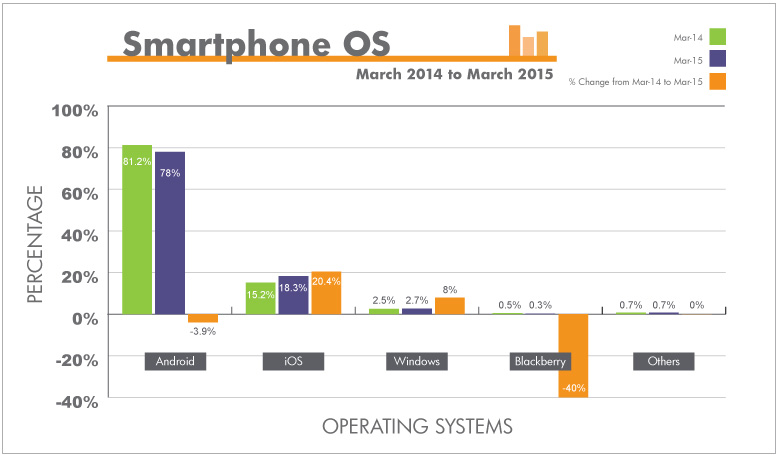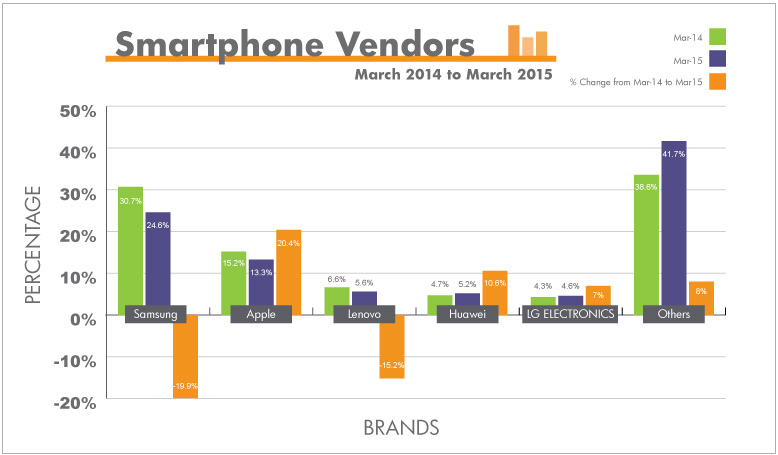At first glance, the worldwide smartphone market in the first quarter of 2015, looks almost the way it did last year. Android is in the lead and iOS, Windows Phone and Blackberry OS are trailing in second, third and fourth positions respectively. Interestingly though, the total number of smartphone shipments dropped by 11.4% to 334.4 million from the 377.6 million shipped in the fourth quarter of 2014, suggesting an overall slowdown in the smartphone market.
Although Android leads the smartphone operating systems market with 78% market share, its share declined by about 4% between the first quarters of 2014 and 2015. In contrast, currently holding 18% market share, iOS grew by more than 20% and currently holding nearly 3% market share, Windows Phone gained 8% during the same period. Blackberry OS lost 40% to reduce its market share to 0.3%.
See the OS stats shown in the graph below:

Smartphone OS market share from Q1 2014 to Q1 2015.
On the vendor side, here were a lot more gains and losses this quarter, and competition seems to be heating up. Samsung leads the smartphone vendor market with 25% market share, but it lost 20% market share between the first quarters of 2014 and 2015. In contrast, Apple grew by 20% during the same period to reach 18% market share, placing them in second position. Among other prominent smartphone vendors, Lenovo lost 15% and currently holds almost 6% market share putting them in third, Huawei gained 11% and currently holds 5% market share and LG Electronics gained 7% to reach almost 5% market share.
See the Vendor stats shown in the graph below:

Smartphone vendors market share from Q1 2014 to Q1 2015.
Overall, Android is likely to sit happily leading the operating system market share with Samsung as it’s number one contributor. However, they do have to remain cautious with their competitors gaining more ground quarter after quarter. This past quarter has seen a lot of vendor movement as the smaller vendors begin to gain more traction. It will be interesting to see what the second quarter findings bring us.






